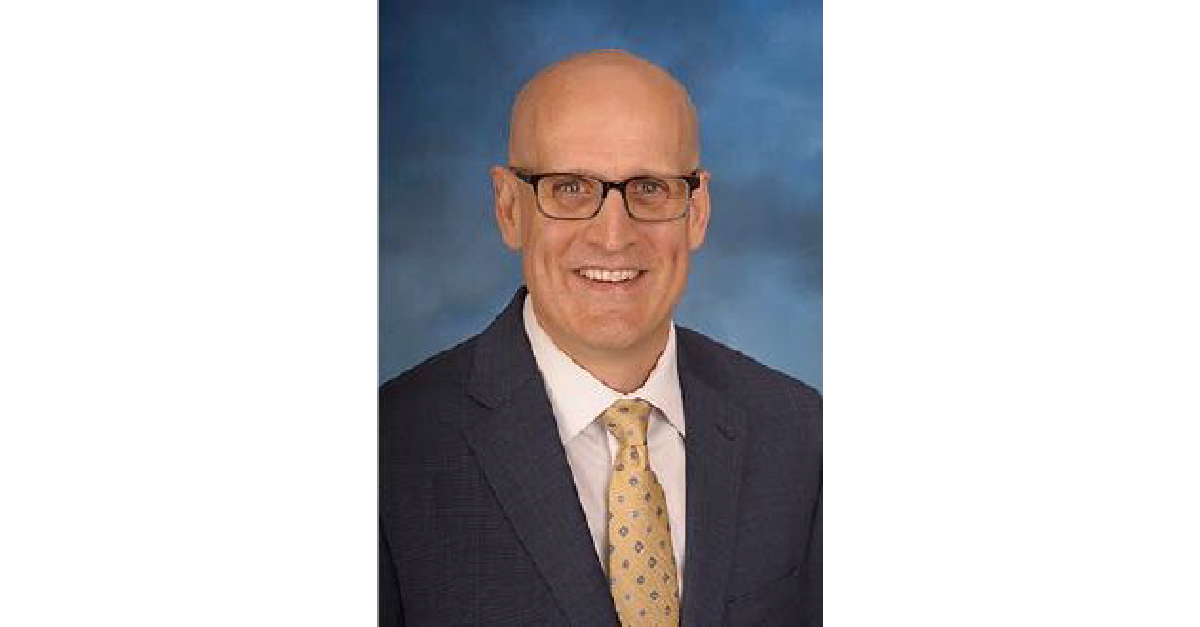
Both actuarial and underwriting roles need to evolve to assure successful predictive modeling.
Because of their respective roles, actuaries and underwriters approach pricing in different ways. Actuaries focus on facts and data, looking at the averages and the aggregates; underwriters rely more on their professional experience, homing in on the individual risk. The actuarial perspective reflects the big picture; the underwriting considers the details of individual risks.
When predictive modeling enters the scene, however, the need for a strong working relationship between actuaries and underwriters intensifies. Predictive modeling is a benefit to actuaries, but underwriters can find its fine-tuned predictions counterintuitive, if not threatening, to their traditional roles.
“Going forward,” said Scott P. Weinstein, KPMG LLP’s U.S. lead of property and casualty actuarial services, “the market will be dominated by those companies exhibiting the combined strength of the actuary and the underwriter.”
When underwriters and actuaries have a strong working relationship, the result is greater than what each professional offers alone, said Bret Shroyer, solutions architect for Valen Analytics, a provider of proprietary data, analytics and predictive modeling.
In a case study, he examined the actual loss ratio relativity by risk score using predictions from both the underwriting group and the predictive model and combined and averaged the score of each. “The results were striking,” he said. The underwriting group identified nearly 70 points of lift; the predictive model, 125 points of lift. The combination of the two generated nearly 200 points of lift. (See Chart 1.)
Getting to that point, however, does not necessarily come easily.
Underwriter’s Perspective
Given the time and effort actuaries invest to offer recommendations, they can find what underwriters do with the information a bit disconcerting. Underwriters live in the everyday realities of how pricing affects everyone, said Chuck DiGrande, assistant vice president of personal lines underwriting for The Andover Companies, which uses predictive modeling on a limited basis.
Sandwiched between actuaries and marketers, underwriters have to consider how insurance commissioners, agents and customers will respond to changes in price, he added. “If you make a filing that adheres strictly to an aggressive actuarial indication, a state regulator may gag on it. That has been our experience.”

Further, when prices rise too quickly, he said, insurers and agents may lose valuable customers due to sticker shock, so rates might not increase as quickly as actuaries would prefer. This is where the experience, instinct and intuition of underwriters come into play. “We have to put all that in a blender and figure out what are we going to go with [it],” he said. “Responsible pricing is a must at the end of the day … balancing market conditions with actuarial recommendations is an art form.”
It is common, however, for insurers to experience internal pricing disputes between actuaries and underwriters, according to results from the Valen Analytics study released in September 2015 titled, “Are Underwriters & Actuaries At Odds Over Price?”1
More than three-fourths (77 percent) of 201 property-casualty professionals surveyed indicated they face pricing disputes between actuaries and underwriters. Of those, 19 percent said it is because actuaries are too conservative while another 16 percent said that underwriters are too optimistic/aggressive.
Shroyer, a property-casualty actuary, said when he developed rates earlier in his career, “the standard goal was always to build in a margin on the price side because you knew the underwriters were going to be more aggressive in the final price.” This practice might explain why 21 percent in the Valen survey said that actuarial rates are too high for the market.
Another 43 percent cited underwriters for dismissing data over judgment as the reason for pricing conflict. Actuaries are often frustrated by the tendency of underwriters to not trust the data results, Shroyer said.
Enter Predictive Modeling
Nearly 20 years ago, predictive modeling was a cutting-edge approach to pricing personal automobile insurance. By the end of the last decade, commercial insurers began applying predictive analytics, thanks to technological innovation and growing data sources. This pricing approach has since evolved to a best practice and is also being applied in other ways.
Towers Watson’s annual predictive modeling survey results show the gradual migration of predictive modeling in commercial lines over time. In its 2009 survey, 40 percent of U.S. companies indicated they were using predictive modeling in commercial lines and another 40 percent said they were planning to do so. Fast forward to five years later, where the most recent survey, released in February 2015, shows that 67 percent of U.S. insurers are using predictive modeling with 27 percent planning to do so. (See Chart 2.) The complete Towers Watson survey includes both the U.S. and Canada and shows that 57 percent currently use predictive modeling and 33 percent are planning to use it.2
Valen’s April survey of 39 property insurance executives also shows predictive modeling activity among commercial insurers. According to the “Valen Summit 2015 Survey”3:
- Forty-five percent have implemented predictive analytics in the last two years.
- Fifty-six percent intend to start using predictive modeling.
- Eighty-one percent believe that predictive modeling has a moderate to significant impact when rating agencies such as A.M. Best, Moody’s and Fitch rate underwriting performance.
Big writers in commercial insurance are already doing predictive modeling, with many starting with commercial auto, business owners’ policies and workers’ compensation, Shroyer noted. “If you look at the top 20 writers, all of them are doing it,” he said. “They have the data, they see the value, [so they are] more in the mindset of data-driven decision making.”
Carriers collecting $150 million or less in premium have been slower to adopt and benefit from predictive modeling, Shroyer said: Besides overcoming barriers between actuaries and underwriters, these insurers lack data for meaningful models, but that can be overcome by accessing additional data.

Overcoming Resistance
While predictive modeling is a boon to insurers, some underwriters are not necessarily embracing predictive modeling with open arms, according to Valen’s April survey. Eighty-two percent of the 39 executives surveyed said underwriting adoption was a “significant” or “high” concern.
There were two main reasons. The first is that underwriters believe their experience is more valuable than a predictive score when assessing risk, according to 24 percent of the executives. Secondly, a quarter of respondents cited underwriters’ concern that predictive analytics will replace their jobs. Said David Perez, executive vice president of Liberty Mutual Insurance Group’s National Insurance Specialty department, “There is no doubt underwriting jobs are being eliminated in certain sectors,” because traditional underwriting was more hands-on in the past. “The underwriting job is going to change.”
Predictive modeling offers advantages to underwriters, Shroyer said. Since it addresses simpler risks, underwriters can focus on those clients where the model and intuition are at odds, he added. “It gives the underwriter the flexibility to use the score as a tool rather than being driven by a score.”
“If actuaries cannot convince the underwriter, they are not going to convince the product or state manager, and certainly not the CFO or CEO. ”
— Scott P. Weinstein
Actuaries must educate underwriters about predictive modeling and identify how it benefits everyone, Weinstein said. “This is where the actuaries have missed the mark, in providing an understandable education as to the value and reason why these models can be of assistance,” he said. “If actuaries cannot convince the underwriter, they are not going to convince the product or state manager, and certainly not the CFO or CEO.”
“The future of the actuary,” Perez said, “is to be more engaging and have the ability to articulate what they are working on to the underwriting team,” he said. “You cannot have a collaborative environment where only one side collaborates.”
Two-Way Understanding
Both professions will need to gain greater understanding to best employ predictive modeling, Perez said. Otherwise, the growing dependency on data and analytics in the insurance sector “can actually stifle industry innovation and risk taking if there is not a clear communication channel.”
“For relationships to blossom, it is about learning more about the other side of the profession or output [and] understanding the mechanics behind each,” he added. To encourage collaboration and understanding, Liberty has integrated actuaries into its underwriting team. (See sidebar.)
“Actuaries should know as much about a risk portfolio as possible, but underwriters need to understand the dynamics behind a model just as much,” he said. Actuaries also need to appreciate that a “model is a model and it does not address every need … It’s not an end all and be all.”
When actuaries accept the feedback underwriters provide it makes a big difference. “Provided we can make adjustments to our model that will incorporate risk specifics and certain changes in underwriting approach that might not be encompassed in the model itself, the underwriters are fine with it and like having a benchmark to work from,” Perez added. “This is how everyone can differentiate in a model environment.”
Weinstein said that actuaries can build their credibility with underwriters by gaining more experience with as many other functions as possible, from underwriting to marketing. “Actuaries need exposure to claims operations and underwriting, in addition to their traditional focus on pricing, reserving and capital,” he pointed out. “The actuary needs to become a student of both the front-line and back-room operations of the industry … in some instances it just means moving away from the ‘ivory tower’ and getting their hands dirty.”
Perez takes this one step further. “Quite frankly, commercial insurance is getting so analytical, you will see a growing number of staff from the actuarial world transitioning into the underwriting world, due to the fact that analytical skills and disciplines are becoming a larger part of the underwriting process and are valued more than ever,” he said.
Going Forward
Recognizing the benefit of increased collaboration between actuaries and underwriters, the Casualty Actuarial Society and The Institutes (formerly known as the American Institute for Chartered Property Casualty Underwriters (AICPCU) and the Insurance Institute of America (IIA)) have entered into a strategic alliance to enhance their premier professional education offerings and deliver innovative educational solutions to the insurance industry and risk management professionals. The alliance was first announced at the CAS 2015 Annual Meeting in Philadelphia last November.
As actuaries learn to better appreciate pricing in a larger context and underwriters gain better understanding of how the models effectively predict risk, both professions will need to adapt to ensure success. The actuaries and underwriters who do this will be able to help their insurers be more competitive.
Annmarie Geddes Baribeau has been covering actuarial topics for more than 25 years. Her blog can be found at http://annmariecommunicatesinsurance.com/.
3 http://valen.com/valen-summit-2015-survey-results/.
The Liberty Solution
Predictive modeling introduces challenges in the underwriting-actuarial relationship, but Liberty Mutual Insurance Group’s, National Insurance Specialty —which provides a range of primary and excess property and casualty products through brokers to the energy, construction and specialty markets — has found a way to maximize the actuary-underwriter relationship.
“Our actuaries needed to be more involved with our businesses and our strategies so they have a better ability to predict outcomes,” said David Perez, executive vice president of the department, which fully integrated actuaries into its underwriting units to create a unified team.
“They not only assist in developing assumptions within our business plans, but we involve them at the transactional level, exposing them to our underwriting and claims processes, and even having them attend broker and client meetings.”
Including actuaries in broker meetings, Perez believes, is not a common practice, but it does create deeper insight into the business by providing actuaries “with a better understanding to execute certain pricing and underwriting assumptions built into our plans and models, as well as giving their own assumptions new perspectives.” This is meaningful, he added, because agents and brokers are “driving a huge trend for more innovation and specialization as this increases both value proposition and transactional efficiencies.”
In Perez’s department the predictive model is a tool instead of the standard. “This is different because we have to validate to the actuarial team that certain adjustments are accurate,” he said. “The closer they are to the business, the greater they can make the validation.”
The approach also improves communication. “A book of business needs to be evaluated at a granular level in order to maximize the impact of changes in underwriting appetite, risk pricing or mix of business,” he said. “Communication of these portfolio demographics on a real-time basis helps actuaries provide the most accurate analysis possible.”
The approach is also putting Liberty in a better position to address underwriting challenges, such as greater pressure to innovate and increase the level of specialization in risk taking, he said. Another challenge they are starting to see is for “integrating predictive modeling and analytics into potential areas of opportunity that lack robust historical data.”












